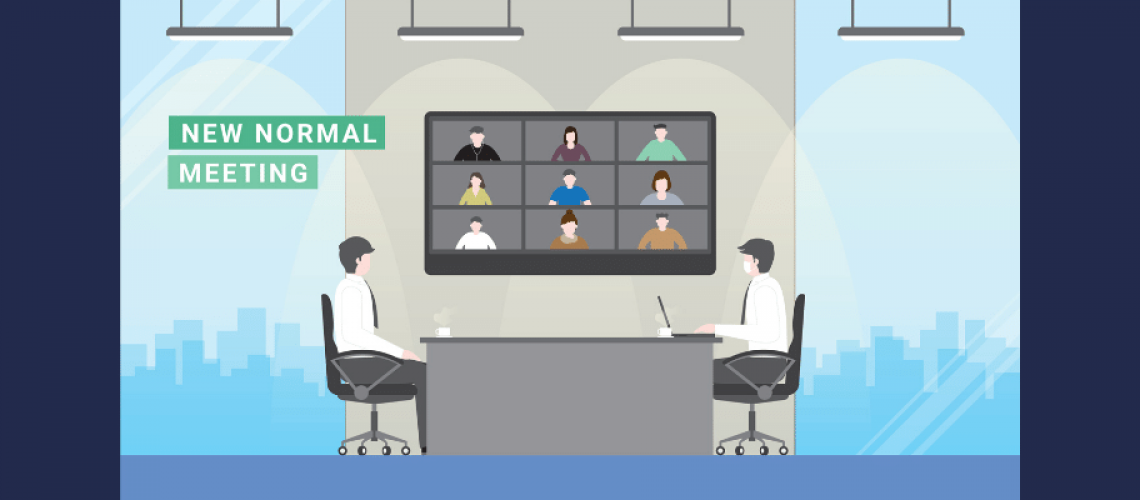Whatever the “new normal” turns out to be, pandemic concerns have already re-shaped how businesses are considering their spaces. Employers have to re-think every point of an employee’s path from the parking lot to their work station. Some trends like work-from-home options and the mainstreaming of video-conferencing were already happening, but COVID-19 rapidly increased their integration and the public’s trust with using them.
The contactless / touchless trend
The pandemic has prioritized contactless and no-touch options across every industry. Banks and credit-card machine companies are in an arms-race to offer touchless solutions. The way we get food has changed with restaurants and grocery stores filling orders through apps, and continuing curbside/doorstep contactless-delivery options even post-lockdown. For corporate offices, touchless meeting rooms are being created by adapting spaces, their capabilities, and components. Integration firms have incorporated touchless technologies into the term “frictionless workplace”.
Some jobs just cannot be done remotely.
Not every position can be done effectively from home. Worker satisfaction matters, too: a gallup poll conducted at the height of the lockdown showed 41% of employees who attempted to work from home preferred to go back to their office. The implications for attracting and retaining good employees while ensuring their safety are enormous; newfound priorities created by the pandemic are an emerging area of competition between employers.
Even if we cannot yet see the totality of the new normal, corporate trends already tell us that touchless meeting rooms are part of a broader movement that is unlikely to reverse, even after a possible vaccine.
Components of a touchless meeting room
Occupancy sensors: movement in the room powers up lights, temperature controls, and audio-video hardware. Likewise, systems are programmed to shut down after movement in the room discontinues.
Voice controls: consoles and touchscreens can be replaced with vocal commands that control settings for video conferences, presentation software, displays, and adjusting the room’s temperature or lighting. Thank Alexa and Siri for increased comfort levels here.
Wireless technologies: connect laptops, tablets, and smartphones without touching a single room component. Video calls connect and disconnect automatically.
Personal device & phone control: Bring Your Own Device (B.Y.O.D) to control the room’s technology, bypassing communal consoles and touchscreens. Guests and employees can share content however they choose. This eases the cognitive load as well; we already know how to operate our own device.
Facial Recognition: imagine a space that recognizes employees and grants certain access without any conscious action on their part. Workstation ergonomics, lighting and temperature settings, and the auto-launch of video-conferencing or presentation software are just some possibilities. Privacy concerns remain, but this technology is already widely used.
A combination of fear, confusion, and legitimate health concerns have dictated a new set of priorities. Face-to-face employee meetings and huddle-room sessions will be less frequent and with attendance limits, but they will not disappear altogether.
How will your business adapt?
Whether you are considering converting your space to a touchless environment, or interested in exploring what audio-video technologies are best suited for your company’s priorities, the knowledgeable staff at AV Solutions can help. Our experts can provide consultation on which technologies are best suited to handle your organizational needs and goals. Contact us here or call (225) 386-3832.
